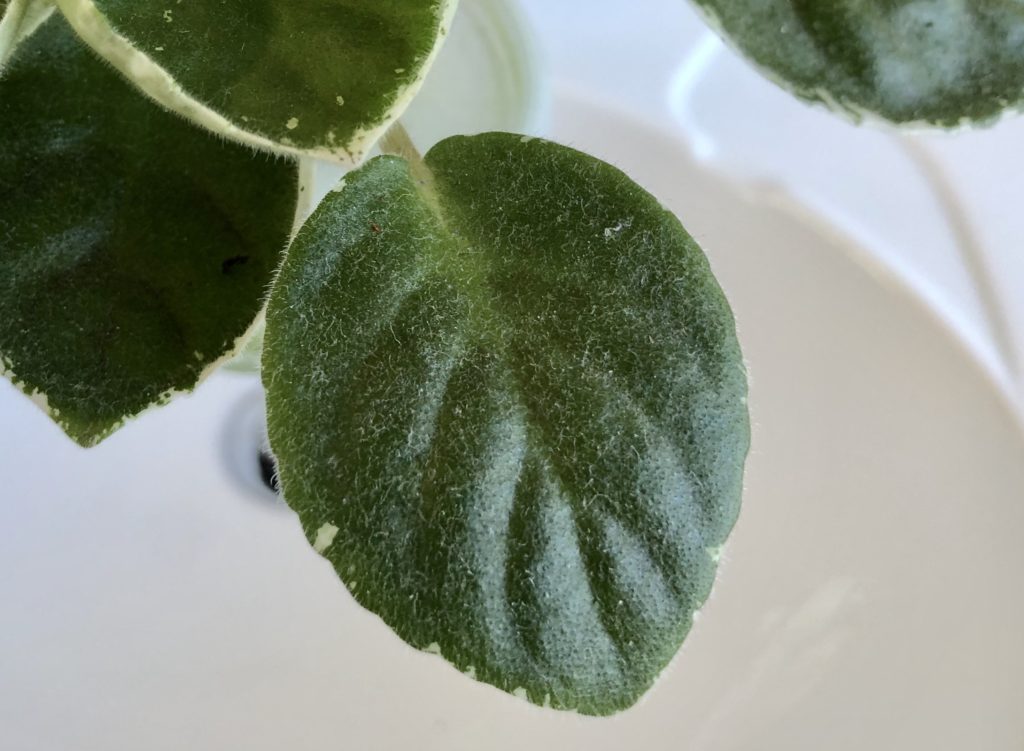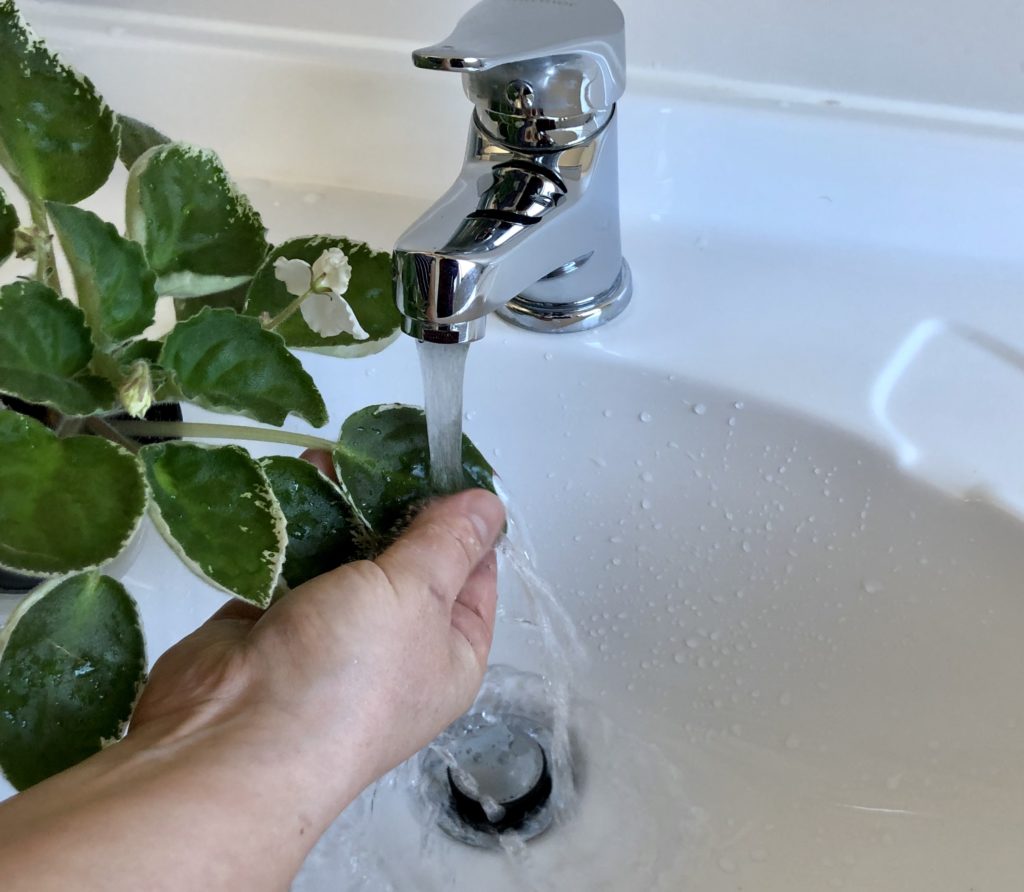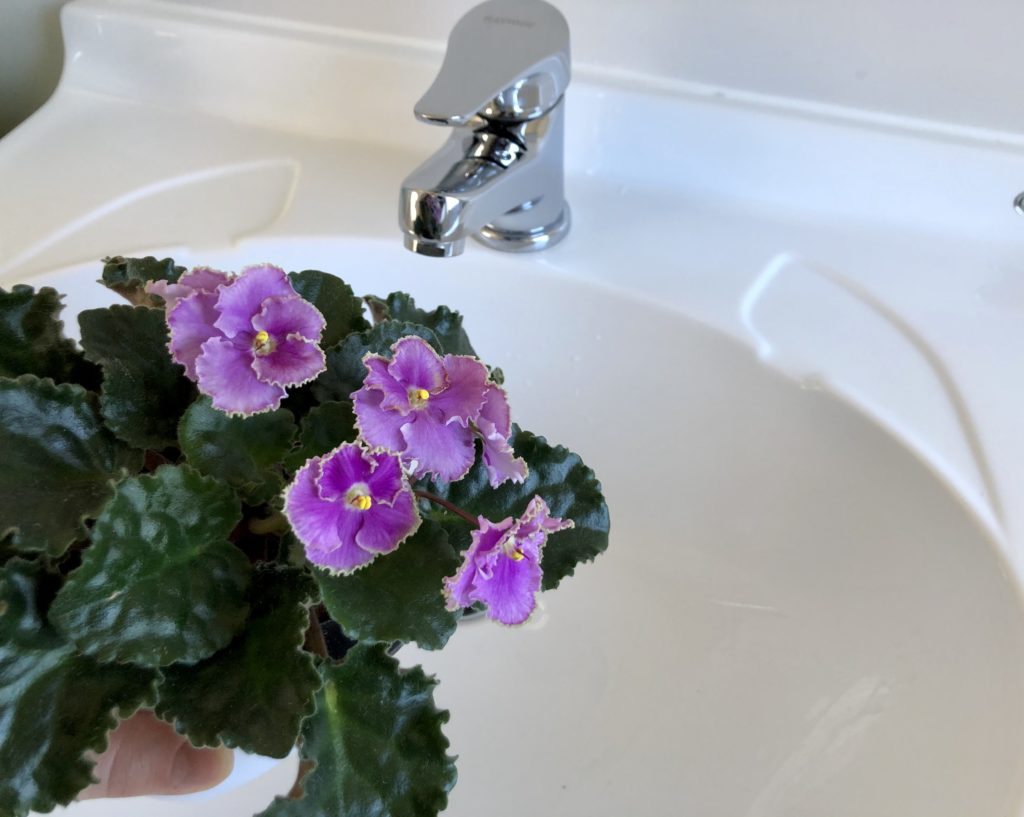You most certainly can wash your violets. Period. In fact, they will love their shower.
The myth of water, the greatest enemy of African violets leaves, is old and still strong. People are scared to drop a single drop of water on their plant because they were told 20 years ago that it will ruin the foliage.
Why would I wash a violet?
African violets, like all other plants, are breathing. They don’t have lungs but use tiny little pores called stomata on their leaves, to breath. Some house dust particles are also very small and can partly block stomata. So very dusty plan can’t breathe as easily and fully as it needs. It won’t choke of course. But it will really thrive after regular cleaning.
Sometimes I see online discussions about African violets cleaning, and different tools for removing dust, pets fur and soil from the foliage are mentioned, old makeup brushes being the best bet.

And the thing is, our favourite plants are furry, and they are dust magnets. You can’t just wipe a violet like a monstera – the fur won’t let you clean the leaves that way. And logically thinking, brushing every leaf with makeup brush won’t reduce the overall amount of dust in the room – we brush it off, we breathe in some in the process, the rest stays in the air for some time and then slowly lands back on all surfaces in the room, including violet’s leaves.
And violets are not desert plants, rain occurs in their natural habitat, so water is surely not their natural enemy. So why people say that you can’t wash your violets?

Water itself won’t damage your plant. Water AND strong light together might do that. Or water AND cold temperature. Why is that?
Light burns on African violets leaves
Remember starting a fire with magnifying glass as a child?
A drop of water can act as magnifier as well.
So if you wash your violet, or have some water on leaves when watering your plant, and the sun is bright… That’s where you have your homemade magnifiers on African violets leaves. And eventually, burns. Dreaded brown spots that people tend to call water damage, whereas it is in fact a light burn.
Cold burns on African violets leaves
Have you ever been wearing soaking wet clothes outdoors, on a cold day? That is very cold. The first recommendation would be to put some dry clothes on.
Our plants have their own natural ‘puff jacket’ on at all times – their furry foliage is well insulated for temperature variations over day and night time in the mountain regions they are originally from.
My guess is, when the night is cold and violets leaves are wet, then water stops the insulation on the foliage from working properly. That’s why in colder winters, when I have 9-12 degrees in my living room at night, water condensate on violets leaves burns them, leaving the same dreaded brown spots.
How to wash your violets and avoid light and cold foliage damage? Easy as!
- Wash your violets on a nice warm day
- Use lukewarm water
- Hold the plant aslant towards the water flow, so you won’t drench the soil with tap water
- Wash the outer rows of leaves, which are usually dusty
- Don’t let the water flow over the crown – it might rot
- Let the plants dry completely before putting them back on your windowsill or under the growing lights.
Shall I pat it dry?
I don’t normally use paper towels or tea towels to pat my plants dry. Partly because I have too many plants, and partly because both paper and fabric will leave tiny particles on the foliage. So whats the point of washing a plant and then applying some more particles on it?
The only situation when I use a tissue or a microfibre towel is when I accidentally wash a crown, where the smallest gentlest leaves are. The crown is less hardy than the rest of the plant, so it might get damaged by too much water and even rot eventually.

Summary
- Violets need cleaning so they can breath and develop to their full potential.
- Water alone won’t damage African violets leaves, so you can safely wash your violets if you follow a few simple rules: no water on the crown, let them dry away from bright light, wash them on a warm day.
